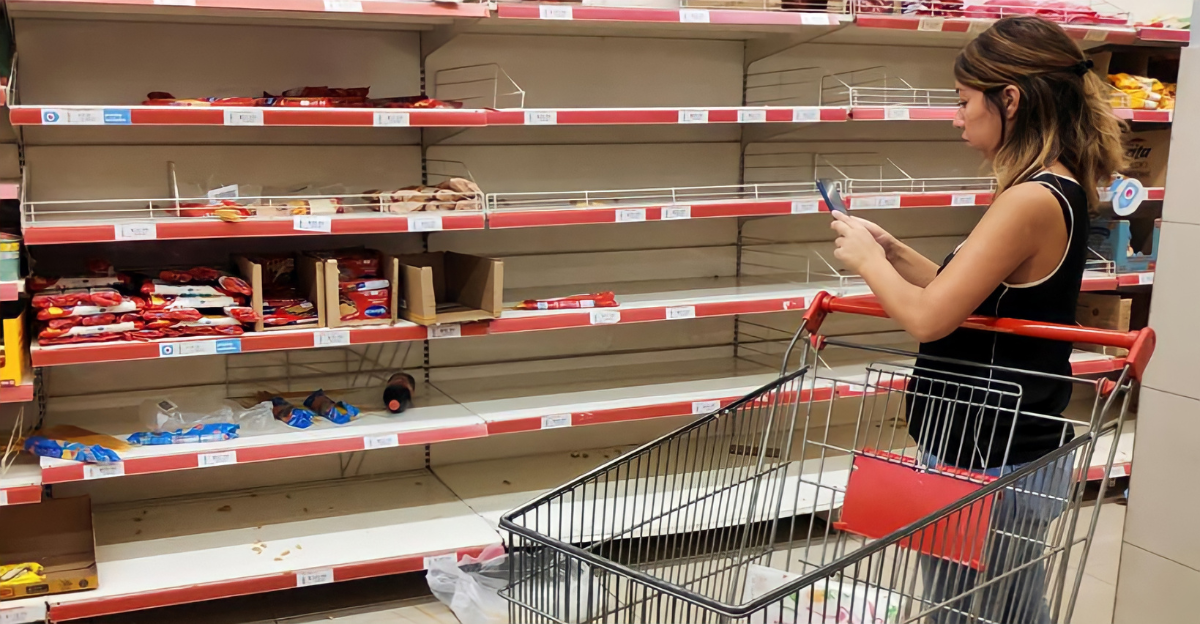
For years, talk of a “retail apocalypse” has come and gone—usually blamed on Amazon, dying malls, or over-hyped doom scenarios. But this time, it’s different.
Target has just downgraded its 2025 outlook following a rocky quarter, forecasting a “low-single digit decline” in annual sales.
Meanwhile, Walmart CEO Doug McMillon has taken concerns directly to President Trump, warning of widespread stock shortages.
These aren’t just cautious predictions—they’re loud warnings from the biggest names in American retail. And for the first time, the alarm bells are ringing in unison.
What was once speculative is now unmistakably real. Behind the scenes, a volatile mix of tariffs, supply chain breakdowns, and consumer anxiety is brewing, which could be the retail collapse of our time.
Target’s Sales Slump Raises Red Flags
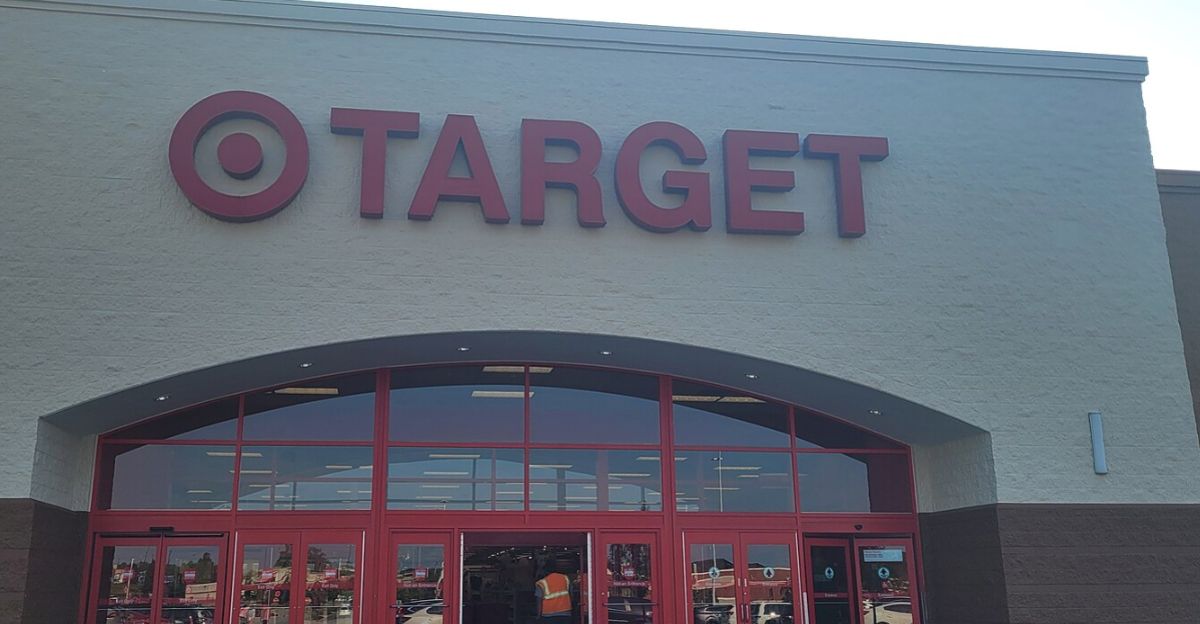
Target’s recent financials were grim. First-quarter revenue fell 2.8% to $23.85 billion, missing the $24.23 billion estimate. Comparable sales dropped 3.8%, including a 5.7% plunge in in-store purchases.
No single factor explains the drop—economic unease, tariff pressure, and backlash from recent diversity policy shifts all played a part.
CEO Brian Cornell was candid: “We’re not satisfied with these results.” What’s more worrying is Target’s full-year forecast revision, dialing back any hope of recovery.
For a brand built on affordability and trend-driven shopping, the inability to attract value-focused buyers signals a deeper issue: even the discounts aren’t enough anymore.
Walmart Issues Stark Tariff Warning

Even Walmart, the poster child of retail resilience, is showing signs of strain. CEO Doug McMillon recently admitted the company “can’t absorb all the pressure” from new tariffs.
That’s a big deal—Walmart, with its razor-thin margins and massive buying power, has always prided itself on keeping prices low.
But tariffs on Chinese goods have pushed costs too high to maintain their “everyday low price” model. If even Walmart has to raise prices, it’s a warning shot for the entire industry.
This isn’t just about inflation—it’s about a long-standing business model reaching its breaking point.
Retail Giants Unite to Push Back
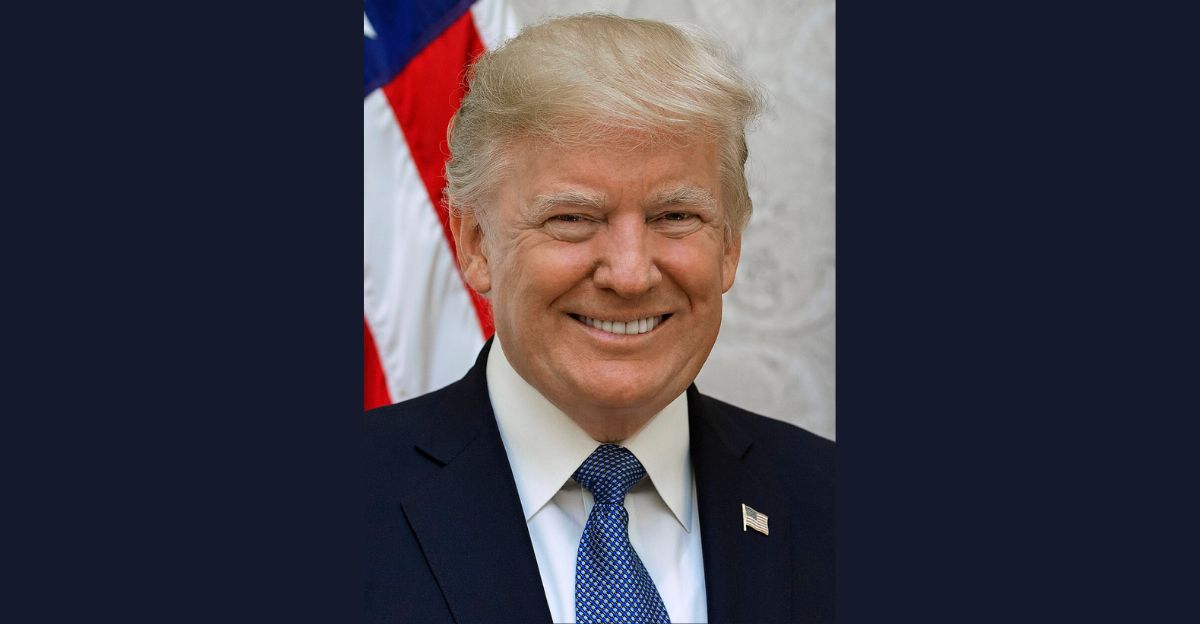
On April 21, 2025, the CEOs of Walmart, Target, Home Depot, and Lowe’s met with President Trump—not as competitors, but as allies.
Their shared plea: roll back tariffs before shelves go empty. It’s rare to see retail rivals collaborate this openly, but the stakes were too high to ignore.
Their message was unified and urgent: the current tariff policy is unsustainable, and action must be taken now. When arch-rivals come together to sound the alarm, it’s not marketing—it’s survival.
Tariffs Create Unsustainable Costs
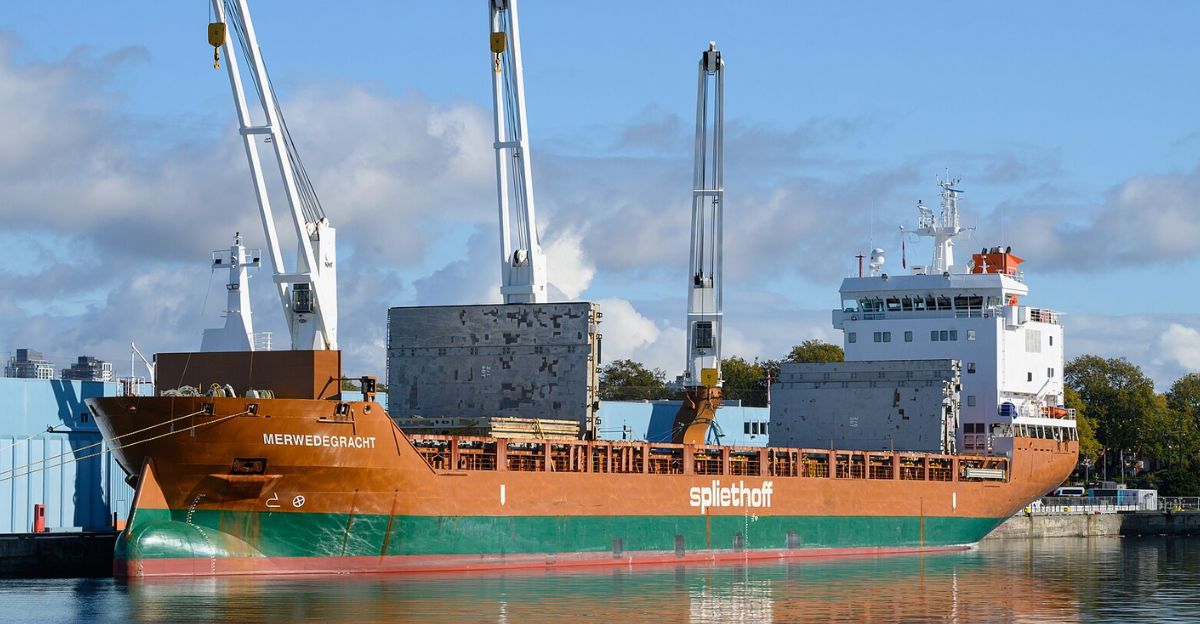
The numbers behind the tariff hikes are staggering. Between April 9 and May 12, Chinese imports faced a 145% duty—recently reduced to 30% during a 90-day truce.
Other countries now face duties between 10% and nearly 50%. Some apparel and footwear items exceed a 200% effective tariff rate.
According to the American Apparel and Footwear Association, these levels essentially act as a ban. As a result, imports from China fell more than 30% in early May.
Canceled shipments, half-filled cargo ships, and vanishing orders are all signs of a supply chain under siege.
Tariff Shockwaves Hit Hard and Fast
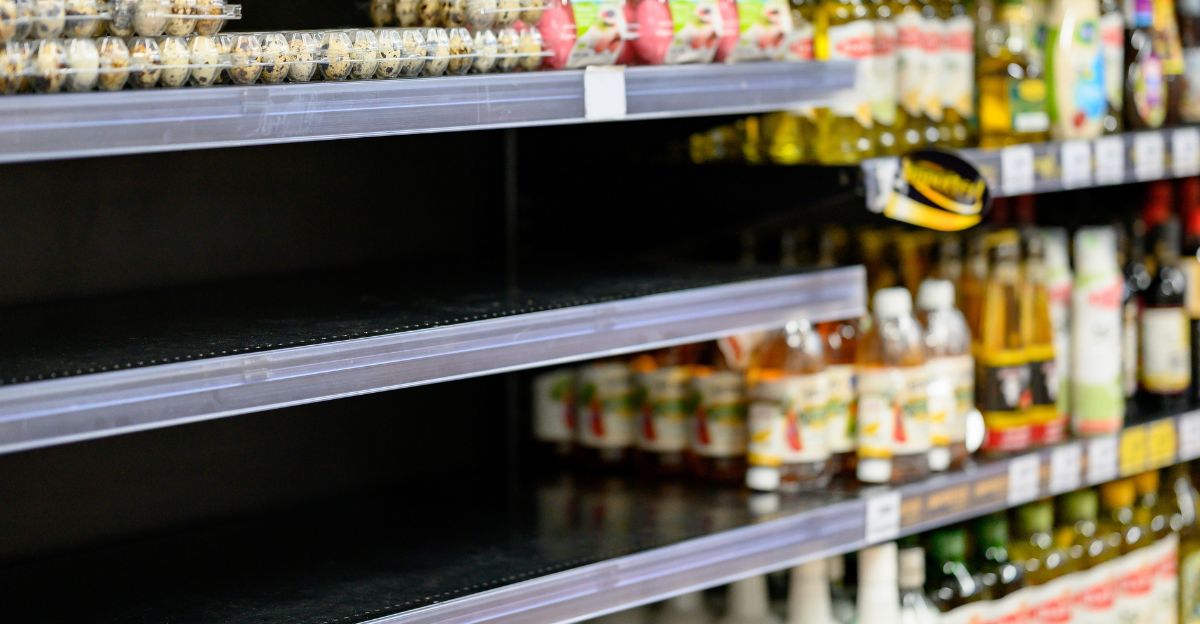
The “bullwhip effect” explains why small disruptions cause outsized ripple effects. In retail, the latest tariff hikes have triggered the biggest artificial demand shock in recent memory.
Companies rushed to import goods before duties rose, flooding warehouses—then pulled back hard, causing rapid depletion.
Since it takes 30 to 50 days for shipments from Asia to reach U.S. stores, today’s empty shelves reflect decisions made weeks ago.
Orders from China have plummeted, freight bookings are down sharply, and low-cost essentials like toys, home goods, and clothing are already vanishing from inventory. Supply experts say the worst is still ahead.
Panic Buying Fuels a New Crisis
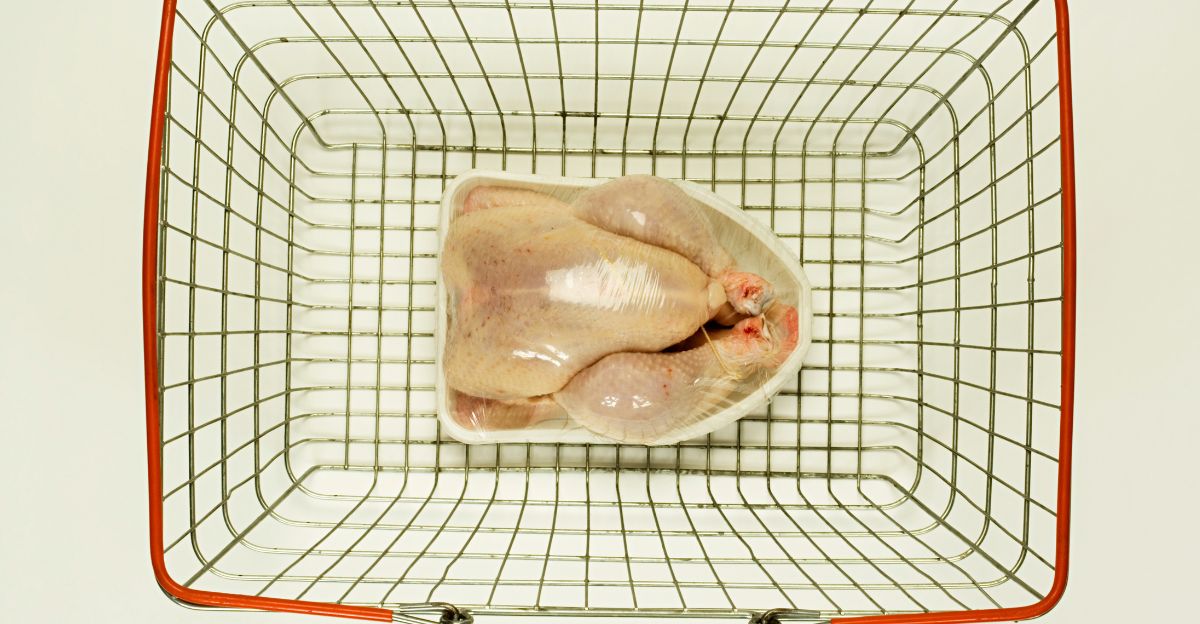
Consumers aren’t just spending less—they’re shopping differently. Target reports fewer store visits and smaller baskets, signaling a pullback to only essentials.
It’s eerily reminiscent of pandemic shopping behavior: fear of shortage leads to stockpiling, which triggers actual shortages.
Consumer confidence has now dropped for four consecutive months, and inflation concerns are rising. When people hear rumors of empty shelves, they react fast—clearing out products and reinforcing the cycle.
Retailers now face a new opponent: consumer psychology. And panic is spreading faster than products can be restocked.
Empty Shelves Are Becoming the Norm

Reports of product shortages are increasing nationwide, and they go far beyond routine inventory delays.
Social media users describe Walmart stores removing items like meat and dairy from shelves, with some citing internal directives to limit sales of certain goods.
Though still anecdotal, industry analysts confirm that retailers are actively managing scarcities, especially in categories dependent on Chinese imports.
These are not emergency-driven shortages—they’re strategic, cost-saving measures in response to prolonged supply strain.
Retail Trouble Reflects Broader Economic Weakness

This retail unraveling is just one part of a much larger economic picture. The U.S. economy contracted for the first time in three years during Q1 2025.
In March alone, more than 275,000 jobs were lost—most from federal downsizing. Shipping volume from Asia dropped 35%, the dollar is weakening, and bankruptcies are rising nationwide.
Retailers can’t stock shelves. Shoppers can’t keep spending. And the cracks in the economy are getting harder to ignore. This isn’t just retail collapsing—it’s retail revealing the deeper economic fault lines.
A Crossroads for the Future of Shopping
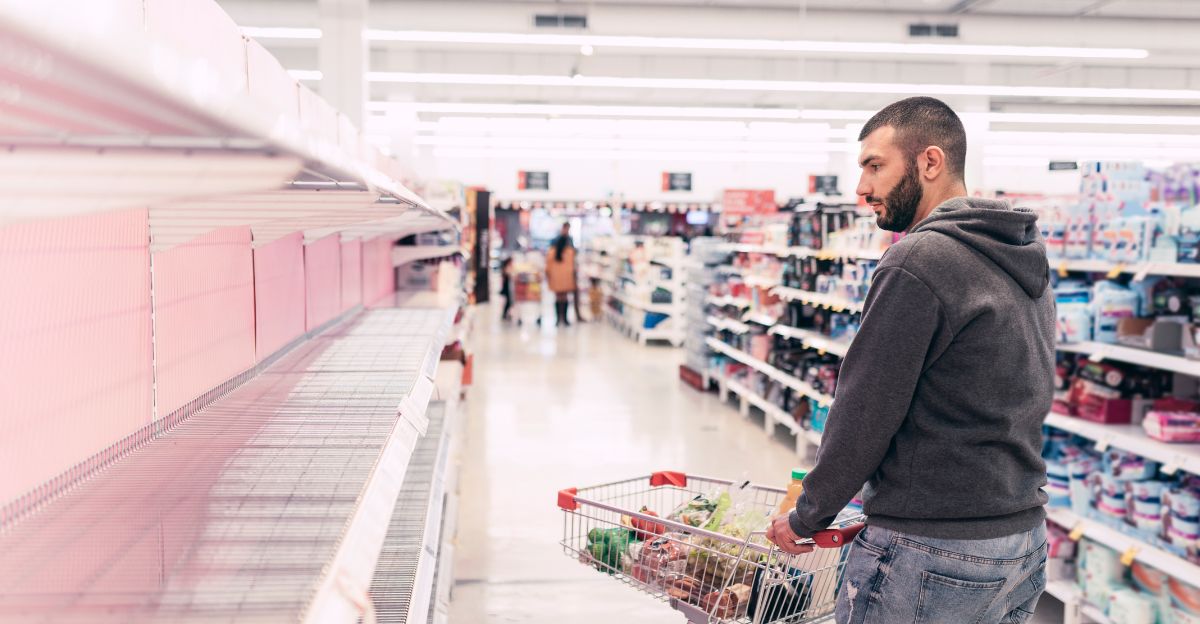
This isn’t a temporary slump—it’s the breakdown of a system decades in the making. The global model of cheap imports, lightning-fast logistics, and limitless variety is faltering under the pressure of trade wars and shifting geopolitics.
Walmart and Target aren’t just posting losses—they’re questioning if the very foundation of their success still makes sense.
What comes next is a reset. Retailers that can’t adapt may disappear. Shoppers should expect higher prices, fewer choices, and recurring shortages.
But in this disruption lies a chance: to rebuild a more resilient, sustainable retail future—if the industry is willing to face the reality.
Discover more trending stories and Follow us to keep inspiration flowing to your feed!

Craving more home and lifestyle inspiration? Hit Follow to keep the creativity flowing, and let us know your thoughts in the comments below!
